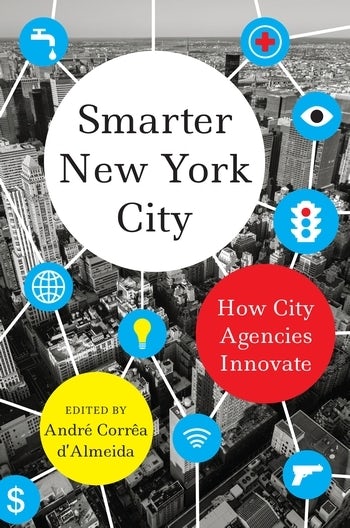Maciej Ryś in Conversation with Renee Bales About Sparks for Innovation

In an increasingly complex world, hackathons have the potential to help innovators, academics, and industry professionals tackle important challenges. These gatherings of members of an industry or academic field for collective problem-solving arose primarily in the tech world in the late 1990s and have since become prevalent across a host of disciplines, with thousands being held per year. As hackathons’ potential has become more apparent, so too has the need for expertise and guidance on how to successfully execute them. What makes a hackathon successful? How can organizers and participants get the most out of a hackathon?
Maciej Ryś’s Sparks for Innovation: Why Hackathons Work and How to Organize One provides readers with a comprehensive, step-by-step guide for successfully organizing hackathons. Ryś is a lecturer and hackathon organizer who has been involved in over 100 hackathons worldwide. Combining insights from extensive ethnographic research with practical, detailed advice on organizing, Ryś demystifies the process of knowledge creation and develops a framework for fostering engagement and innovation. In this interview, Ryś an our Renee Bales discuss the unique applications of hackathons, the author’s research process, and more.
Renee Bales: How would you explain what a hackathon is to someone completely unfamiliar with the concept?
Maciej Ryś: Hackathons are time-bounded gatherings where people come together to solve a specific challenge or a set of challenges. While they originated in the IT sector, they are now widely used across various industries, including marketing, medicine, ecology, and law.
Bales: Sparks for Innovation contains insights for both new and seasoned hackathon organizers. How did you approach making the book accessible for newcomers while keeping it engaging for those with more experience?
Ryś: The book follows a step-by-step approach, offering both practical tips and a more academic perspective that explains the mechanisms behind what makes hackathons work. This way, readers—regardless of their experience level—can focus on the parts that interest them most and benefit accordingly.
Bales: You drew on thousands of hours of ethnographic research to write Sparks for Innovation. What was the most surprising part of the research process for you?
Ryś: What surprised me most was how each hackathon creates its own unique atmosphere and culture. Even small details and subtle characteristics can make an event stand out. Exploring a given hackathon’s mix of different people and contexts often leads to the best stories and insights.
Bales: In the book, you delve into both the strengths and the limitations of hackathons. What would you consider to be the biggest challenge facing hackathon organizers, and what strategies can help them navigate it?
Ryś: The biggest challenge, by far, is understanding why the organizer needs a hackathon in the first place and how they plan to measure its success. Many individuals and organizations want to “just organize one,” without discussing the underlying goals. This can backfire, especially since hackathons often require more resources than initially expected.
Bales: The book traces the evolution of hackathons from their roots in tech to widespread application in a variety of academic fields and industries. Why do you think hackathons are so effective across a wide range of disciplines, and what are your hopes for the future of hackathons?
Ryś: Hackathons are a versatile tool that can be adapted to many industries. However, as I mention in the book, they’re a double-edged sword—they require skill and resources to be truly effective. That’s why having a skilled facilitator—or a good guidebook—can make all the difference. As for the future, I believe hackathons will continue to spread and become even more specialized, tailored to the specific needs and dynamics of different environments.
Bales: Do you have any final thoughts you’d like to share about this topic?
Ryś: There are no roses without thorns—hackathons demand resources, but they can be incredibly valuable tools for solving challenges. Their flexibility makes them a powerful component of any innovation toolbox.





